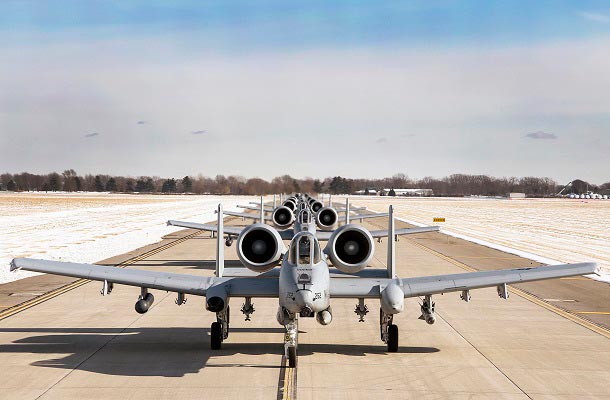National Aviation Day: the Evolution of Aircrafts in the U.S. Military
8/18/2020

National Aviation Day is recognized each year on August 19th, and we at USBA are celebrating by taking a look at the evolution of aircrafts in our Nation’s military.
From the very first pre-World War I aviation observation balloons, used for intelligence gathering and artillery spotting, to President Trump’s announcement establishing the sixth branch of the Armed Forces, the U.S. Space Force, in 2019, America has always been a leader and innovator in aircraft engineering and technology.
Those efforts date back to 1909 when Orville and Wilbur Wright constructed what would become the first American military airplane, the Wright Flyer. Soon after its unveiling, the U.S. Army began testing and training two U.S. lieutenants, one of which was Fredrick E. Humphreys who would become the U.S. Army’s first pilot.
Here are just a few milestones since the groundbreaking accomplishments of 1909 that helped the United States become one of the driving forces in modern aviation history.
Military Aircrafts throughout Time
- 1917: New Jersey-based Aeromarine Plane and Motor created the first military plane to land on a moving carrier. The two-seater Aeromarine 39 was a 100-horsepower plane used as a water and land-based trainer.
- May 27, 1919: LCDR Albert C. “Puffy” Read and his five-man crew in a Navy Curtiss NC-4 Flying Boat completed the first crossing of the Atlantic Ocean by air.
- May 21, 1927: Charles A. Lindbergh, a captain in the Missouri National Guard, completed the first solo nonstop flight across the Atlantic Ocean in his famous plane, the Spirit of St. Louis. Lindbergh received the Medal of Honor for this flight.
- September 24, 1929: Gen James H. “Jimmy” Doolittle made the first instruments-only flight, over Mitchell Field in New York. His plane was a Consolidated NY–2 with a completely covered cockpit, accompanied by a check pilot who monitored the flight.
- March 1, 1937: The first YB-17A, the prototype for the B-17 Flying Fortress, was acquired. It was equipped with multiple machine guns to defend against fighters. The B-17 was designed to fly unescorted to long-range enemy targets.
- 1941: Development and advancements in radar technology were well underway in the U.S., Germany and Great Britain. At this time, the U.S. contracted with the Northrop Corp. and developed the P-61 Black Widow. It would become the first night fighter. Such airborne radar could aid in detecting, stalking and identifying the enemy, bringing the night fighter into firing range.
- June 20, 1941: The Army Air Forces is established by The War Department.
- December 16, 1941: LTC Boyd D. “Buzz” Wagner became the first U.S. ace of World War II after shooting down five enemy aircraft in four days.
- January 14, 1942: Sikorsky Aircraft produced the first helicopter flown by the United States Air Force, Navy, Coast Guard and Royal Navy and Air Force. Known as the Sikorsky R-4 in America and the Hoverfly in the U.K., the single-occupant invention of Russian-American Igor Sikorsky flew up to 75 mph, as high as 8,000 feet and as far as 130 miles.
- August 5, 1943: Jacqueline Cochran became director of Women Airforce Service Pilots (WASP), an organization that merged her Women’s Flying Training Detachment with the Women’s Auxiliary Ferrying Squadron (WAFS).
- July 26, 1947: President Harry S. Truman signed the National Security Act creating the Department of the Air Force equal to the Army and Navy; the National Military Establishment under the secretary of defense; and the Air National Guard as a reserve component of the Air Force.
- October 14, 1947: Capt Charles E. “Chuck” Yeager made the first faster-than sound flight in a rocket-powered USAF research plane called the Bell XS-1.
- April 1, 1954: The Air Force Academy is created.
- May 5, 1961: Cmdr. Alan B. Shepard, Jr., of the United States Navy, became the first U.S. astronaut in space with a suborbital flight in Mercury capsule Freedom 7.
- July 20, 1969: Going to beyond the skies, Apollo 11 crew members Neil Armstrong and Air Force Col Edwin E. “Buzz” Aldrin became the first men to walk on the Moon.
- September 1, 1975: Gen Daniel “Chappie” James, Jr., USAF, became the first Black four-star general.
- January 9, 1976: The Air Force welcomes the impressive F-15 Eagle, a new and first-ever operational air-superiority fighter aircraft. The F-15 has a thrust greater than its weight allowing it to accelerate while going straight up.
- June 18, 1981: The F-117 Nighthawk makes its first flight. It would be the world’s first stealth combat aircraft.
- June 18, 1983: Sally K. Ride became the first U.S. woman to journey into outer space. She was a Challenger crew member of the seventh space-shuttle mission.
- February 3, 1995: Lt Col Eileen M. Collins, USAF, became the first woman pilot of a space shuttle.
- December 20, 2019: The U.S. Space Force is established as the 6th independent U.S. military service branch. It is tasked with missions and operations in the rapidly evolving space domain.
- July 31, 2020: LTJG Madeline Swegle became the Navy’s first Black female tactical fighter pilot. She diligently earned her “Wings of Gold” by the Chief of Naval Air Training.
Be sure to check out more amazing milestones in U.S. aviation history and innovation here.
Uniformed Services Benefit Association® (USBA®) is a nonprofit Association that provides group life insurance, health insurance supplements, and other products and services to military personnel, Federal employees, National Guard and Reserve members, Veterans and their families.
Click here to subscribe to USBA’s Blog.
Follow us on social media @USBAInsurance
Follow us on social media @USBAInsurance